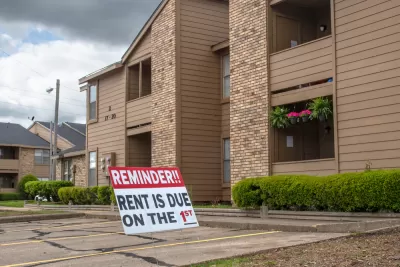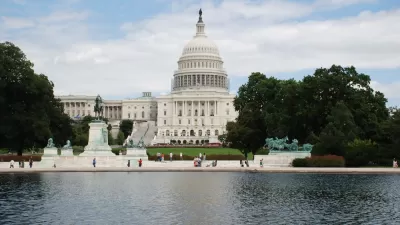More than a dozen states are using Community Development Block Grant funding from the CARES Act to fund emergency rental and mortgage assistance programs.

At least 15 states and the District of Columbia are using federally funded relief for renters. Colorado, Connecticut, Florida, Illinois, Iowa, Maryland, Massachusetts, Nevada, North Carolina, New Hampshire, New Jersey, Pennsylvania, Utah, Washington, Wyoming, and Washington, D.C., are using Community Development Block Grant funding from Congress’s March CARES Act to fund emergency rental and mortgage assistance programs.
Many of the programs are just getting underway, illustrating the challenge of quickly spinning up the gears of bureaucracy, especially amid a pandemic. But the crisis has forced some agencies to implement creative solutions that cut back on red tape and streamline processes for getting money out the door. The glaring inequitable impacts of COVID-19 have led some states to use new frameworks for disbursing funds. Though the programs are still in their infancy, their challenges and successes are already spurring conversations among advocates, community groups, and housing providers about how to use emergency rent relief after the pandemic.
The programs range widely from state to state. In some places, such as Massachusetts, the federal funds are expanding existing emergency rent relief programs. Many other states are building out entirely new programs. On the low end, Utah is using $3 million in CARES funding to seed its rent relief efforts. On the high end, Illinois and Pennsylvania are pumping $150 million of CARES funding into rent relief, with the latter state spending another $25 million in CARES funding on a separate mortgage relief effort. Even at the high end, officials see the programs as stopgap measures that will fall far short of helping every resident in need.
In Washington, the state legislature dedicated $100 million in CARES funding to create ...
FULL STORY: States Use CARES Act Funds to Keep Renters Afloat, But It Won’t Be Enough

Planetizen Federal Action Tracker
A weekly monitor of how Trump’s orders and actions are impacting planners and planning in America.

Congressman Proposes Bill to Rename DC Metro “Trump Train”
The Make Autorail Great Again Act would withhold federal funding to the system until the Washington Metropolitan Area Transit Authority (WMATA), rebrands as the Washington Metropolitan Authority for Greater Access (WMAGA).

The Simple Legislative Tool Transforming Vacant Downtowns
In California, Michigan and Georgia, an easy win is bringing dollars — and delight — back to city centers.

The States Losing Rural Delivery Rooms at an Alarming Pace
In some states, as few as 9% of rural hospitals still deliver babies. As a result, rising pre-term births, no adequate pre-term care and harrowing close calls are a growing reality.

The Small South Asian Republic Going all in on EVs
Thanks to one simple policy change less than five years ago, 65% of new cars in this Himalayan country are now electric.

DC Backpedals on Bike Lane Protection, Swaps Barriers for Paint
Citing aesthetic concerns, the city is removing the concrete barriers and flexposts that once separated Arizona Avenue cyclists from motor vehicles.
Urban Design for Planners 1: Software Tools
This six-course series explores essential urban design concepts using open source software and equips planners with the tools they need to participate fully in the urban design process.
Planning for Universal Design
Learn the tools for implementing Universal Design in planning regulations.
Smith Gee Studio
City of Charlotte
City of Camden Redevelopment Agency
City of Astoria
Transportation Research & Education Center (TREC) at Portland State University
US High Speed Rail Association
City of Camden Redevelopment Agency
Municipality of Princeton (NJ)





























